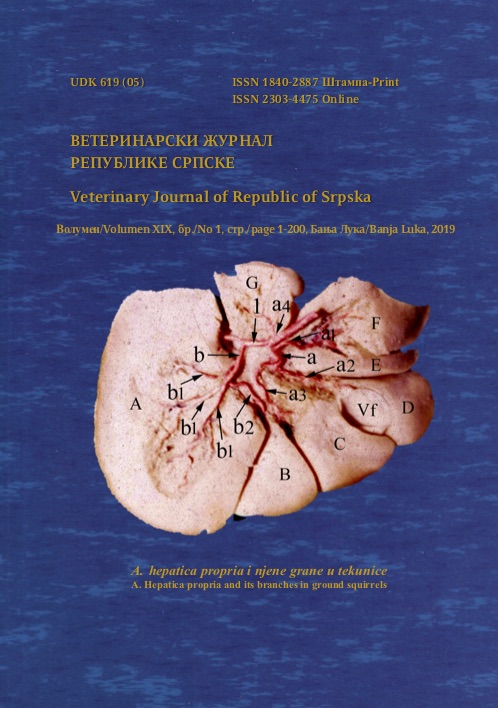SUCCESS OF PROTOCOLS FOR SYNCHRONIZATION OF ESTRUS AND OVULATION IN DAIRY COWS IN SUMMER
DOI:
https://doi.org/10.7251/VETJEN1901035VAbstract
Cattle farming, as one of the most important branches of livestock production, has long
been confronted with the chronic problem of the decline in reproductive performances. In 2005, the
number of cattle around the world amounted to about 1,370,000,000 heads of cattle, while in 2012
this number was just over a billion, which indicates the importance of applying different
reproductive protocols in order to increase production. Heat stress leads to disorders of the
physiological and reproductive processes, as the rise in body temperature caused by heat stress has
direct negative consequences on numerous cell functions. The study included a total of 54 Holstein-
Friesian cows, 28 experimental and 26 control cows from PD Butmir farm with 5 lactations on
average. Hormone protocols for estrus and ovulation were used in June and July 2013. Cows in the
experimental group were subjected to a Presynch + 5dCoS2 protocol. Cows that did not conceive
after this protocol were immediately subjected to resynchronization with Cosynch -72 protocol. The
success rate of the Presynch + 5dCoS2 protocol was 19%, while in the case of Cosynch 72 it was
33%, which was statistically significant (p <0,05). The first presynchronization and synchronization
protocol (5dCoS2) did not significantly help to improve the conception rate after the first
insemination postpartum, but it is evident that they had a positive effect on another protocol (COS72)
in the form of reduction in embryonic mortality in the summer months when embryonic loss is the
greatest.
The COS72 protocol provides satisfactory results in the summer, but good fitness and health
management, as well as heat stress reduction in accordance with the location and farm design are
the preconditions for a successful estrus and ovulation synchronization program prior to artificial
insemination.

